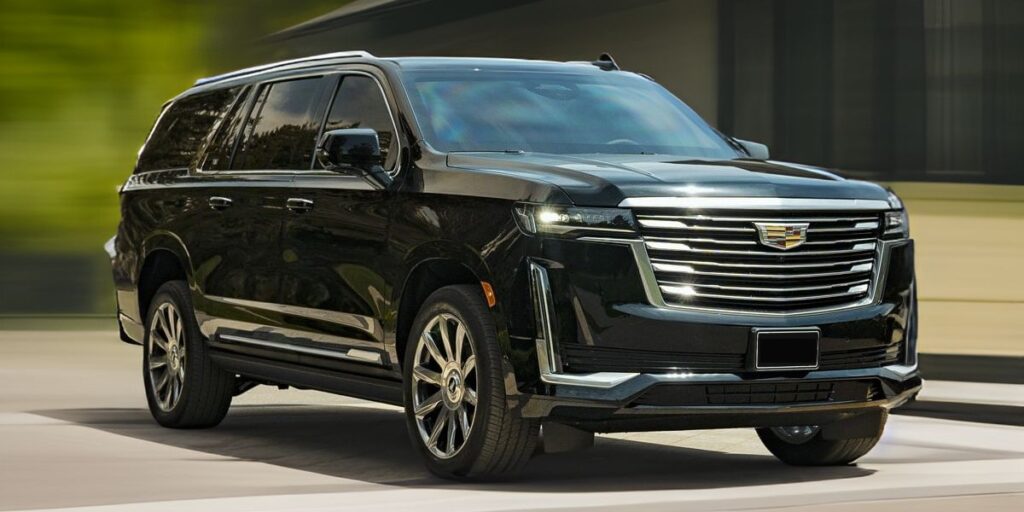
How to Buy an Armored Luxury Vehicle: A Complete Checklist
Purchasing an armored luxury vehicle is unlike buying a standard SUV or sedan. It’s not just about horsepower, styling, or brand prestige. It’s about making a decision that directly affects your safety, your family’s security, and your ability to move with confidence in a world where risks can come unexpectedly.
In Texas — a state known for its concentration of wealth, oil executives, entrepreneurs, and dignitaries — demand for armored luxury vehicles is rising. From Houston to Dallas, Austin to San Antonio, clients are looking not only for luxury but for peace of mind. Whether it’s a Cadillac Escalade Parthenon BR6, an armored Toyota Hilux, or even a Mercedes G63 4×4² armored edition, knowing how to evaluate these purchases is critical.
This guide offers a complete, step-by-step roadmap to buying an armored vehicle in Texas, ensuring you get not just prestige, but also protection that stands up to real-world threats.

Step 1: Start With Your Threat Profile
Before diving into models, prices, or specifications, you need clarity: what are you protecting against?
For example:
- A CEO in Dallas may only need discreet protection from potential criminal activity during travel.
- A diplomat in Houston may face greater risks of targeted attack.
- A high-profile family in Austin may need protection against kidnapping attempts.
This is where you outline your “threat profile” — a short document describing:
- Who will be inside the vehicle (executives, families, security teams)
- Where the vehicle will travel (urban, rural, international)
- The most likely threats (small arms, assault rifles, explosives, carjacking attempts)
The U.S. Department of State Diplomatic Security guidelines provide an excellent starting point for understanding risk profiles in secure mobility (source).
Step 2: Choose the Right Platform
Once you know your threat profile, the next decision is vehicle platform. This isn’t just about looks; it’s about balancing payload capacity (can the chassis support the armor?), usability, and image.
- Luxury SUVs & Sedans – Cadillac Escalade, Mercedes S-Class, Range Rover. These are best for executives and high-net-worth clients who want discreet yet luxurious security.
- Tactical Pickups – Toyota Hilux, Ford F-Series. These are chosen for rugged terrains or when reliability in off-road environments is critical.
- Armored Personnel Carriers (APCs) – Built for agencies, military, and private contractors moving multiple passengers.
In Texas, all these vehicles must remain compliant with state DMV regulations. Ensure modifications preserve VIN and manufacturer integrity for proper registration.
Step 3: Understand Ballistic and Blast Standards
Here’s where buyers often get confused. Not all “bulletproof cars” are equal. Armoring is defined by specific standards.
- BR6 Certification – Covers protection against high-powered rifles such as the 7.62×51mm NATO round.
- NIJ Standards – The National Institute of Justice in the U.S. outlines ballistic resistance categories, widely adopted globally.
- EN 1063 – European ballistic standards covering glazing and multi-layer glass.
- NATO STANAG – Defines levels of blast resistance for armored military vehicles (NATO).
⚠️ Many sellers may claim “BR6 protection” without certification. Always request written documentation and third-party lab test results.
Step 4: Vet the luxury Armored vehicle Supplier
Texas and the U.S. have reputable armoring firms, but not all workshops operate at the same standard. Vet suppliers based on:
- Certifications – ISO, NIJ, EN, or NATO-aligned standards.
- Experience – How many of your target vehicles have they armored? Have they worked with corporate fleets or government buyers?
- Transparency – Do they share material lists, build specs, and ballistic test videos?
- Confidentiality – Armored clients require discretion. Ensure NDAs and security protocols are in place.
For market insights, see Statista’s armored vehicle industry data.
Step 5: Conduct a Technical Evaluation
This is where deals are won or lost. A luxury SUV fitted with poor-quality armor becomes a liability. Insist on a technical checklist:
- Armor & Glass – Thickness, spall liners, anti-shatter treatments.
- Mobility – Upgraded suspension, reinforced brakes, run-flat tires (see Michelin’s run-flat technology).
- Safety Systems – Airbags and factory sensors must remain operational.
- Luxury Interiors – OEM leather, trim, and finishes should be preserved or restored flawlessly.
Step 6: Legal & Compliance in YOur Location
Texas for instance allows armored vehicles to be registered and insured, but key points include:
- Vehicle must pass emissions and safety inspections.
- Import paperwork must be handled correctly for foreign vehicles.
- Specialty vehicles (like APCs) may face zoning restrictions in certain municipalities.
👉 Reference: Texas DMV – Registration
Step 7: Insurance & Financing
Mainstream insurers rarely touch armored vehicles. Instead, work with specialty providers.
- Insurance – Global insurers like Lloyd’s or U.S. niche carriers. See Insurance Information Institute.
- Financing – Expect stricter collateral terms. Specialized banks may offer luxury fleet financing.
- Valuation – Request appraisals to reflect the true armored value for insurance.
Step 8: Delivery & Testing
Never take delivery without acceptance testing:
- Ballistic test certificates (lab-verified).
- Road tests evaluating braking, handling, and run-flat performance.
- Full systems inspection — electrical, safety, luxury features.
Documentation should include test reports and warranty certificates.
Step 9: Training & Operations
Even the best vehicle is only as effective as the driver and team behind it.
- Train drivers in defensive and evasive driving — courses are offered by the International Security Driver Association.
- Establish SOPs for entry, exit, and convoy movements.
- Train mechanics on the unique service needs of armored platforms.
Step 10: Maintenance & Aftercare
Armoring puts extra stress on mechanical systems. A maintenance program must include:
- More frequent brake and suspension inspections.
- Approved armored service networks.
- Spare parts logistics for glazing, run-flats, and reinforced components.
For insight into global challenges, see Defense Industry Daily.
Step 11: Resale & Value
Armored vehicles have a niche resale market. Keep meticulous records, certificates, and service logs to maximize resale value. Engage specialist brokers rather than general dealerships.

Final Thoughts
Buying an armored luxury vehicle in Texas or anywhere for that matter, is not about vanity — it’s about foresight. It’s about preparing for risks while enjoying the refinement of the world’s best automobiles. With the right supplier, verified certification, legal compliance, and aftercare plan, an armored vehicle becomes more than transport: it becomes your guarantee of security and prestige.
At TexasADirect, we specialize in sourcing, verifying, and delivering BR6-certified armored vehicles. From the Escalade Parthenon to tactical APCs, we help clients across Texas and beyond secure presidential-grade mobility.
📞 Contact us today to schedule a confidential consultation and private inspection.



Leave a Reply